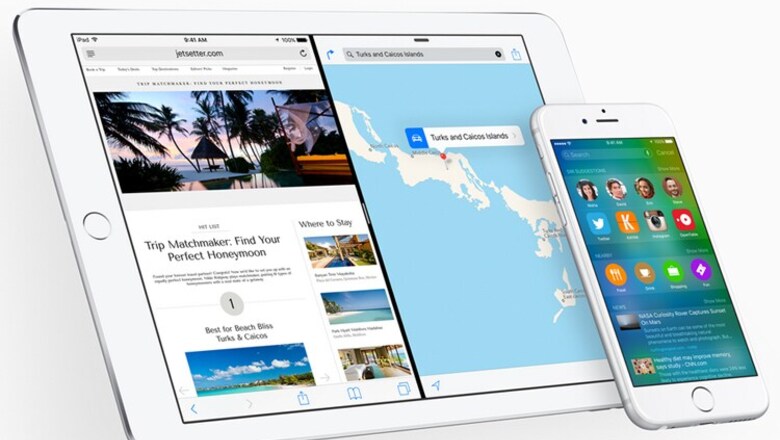
views
New Delhi: At its ongoing WWDC 2015 event in San Francisco, Apple announced that its newest OS for iPhones and iPads, the iOS 9, will require only 1.3GB instead of around 4.6GB space on the device for the OTA update. While this means you don’t have to painstakingly part ways with your phone’s data, it also points to a more transformative technology- App Thinning.
The new iOS 9 will definitely leave more free space on your iPhone or iPad, especially the 8GB and 16GB models, however, developers can leverage the technology to make their apps smaller.
A report on Ars Technica notes that there are three different mechanisms that developers can undertake to make their apps eat less space on the iOS devices.
1.App Slicing: This refers to cutting down on the codes to suit the specific iOS device. For example, a universal iOS app that supports the iPhone 6 and runs on 32-bit and 64-bit devices, it can be sliced to let an iPhone5C-that doesn’t support the new Metal API- download only the chunks it needs. All developers need to do is put artwork in an Asset Catalog ans tag it for individual platforms.
2.On-Demand Resources(ODRs): These are the chunks of apps that are only downloaded when needed and are cleared from your device when you are done with them. For example, in a game with multiple levels, Apple suggests that your app only really needs to have data for the level you are on and the levels immediately following it, not necessarily the levels you’ve already crossed. With apps not including all the assets in the app at one time, data will be downloaded from the App Store when it’s needed and deleted when the OS needs to make space for something else. In short, developers can pick and choose which asset to include in an app and how to periodically remove the elements which aren’t of use.
3.Bitcode: Developers now submit an intermediate representation of their apps that is compiled on-demand depending on the device it is meant for. With on-demand compilation, it also implements any compiler improvements, which enables some of the App Slicing functionality, that Apple makes without requiring the developer to resubmit their applications. Using Bitcode is enabled by default but still optional for iOS apps.




















Comments
0 comment